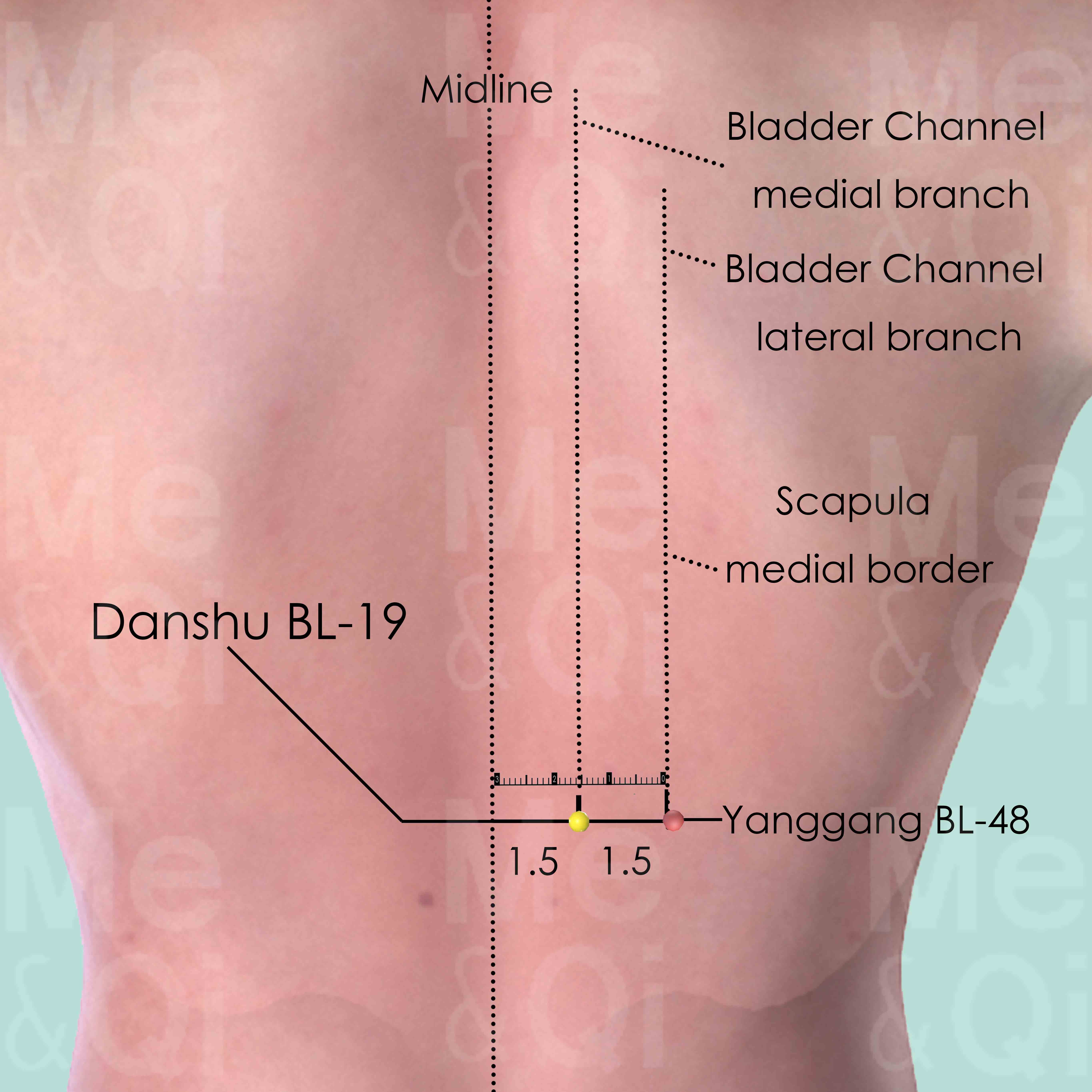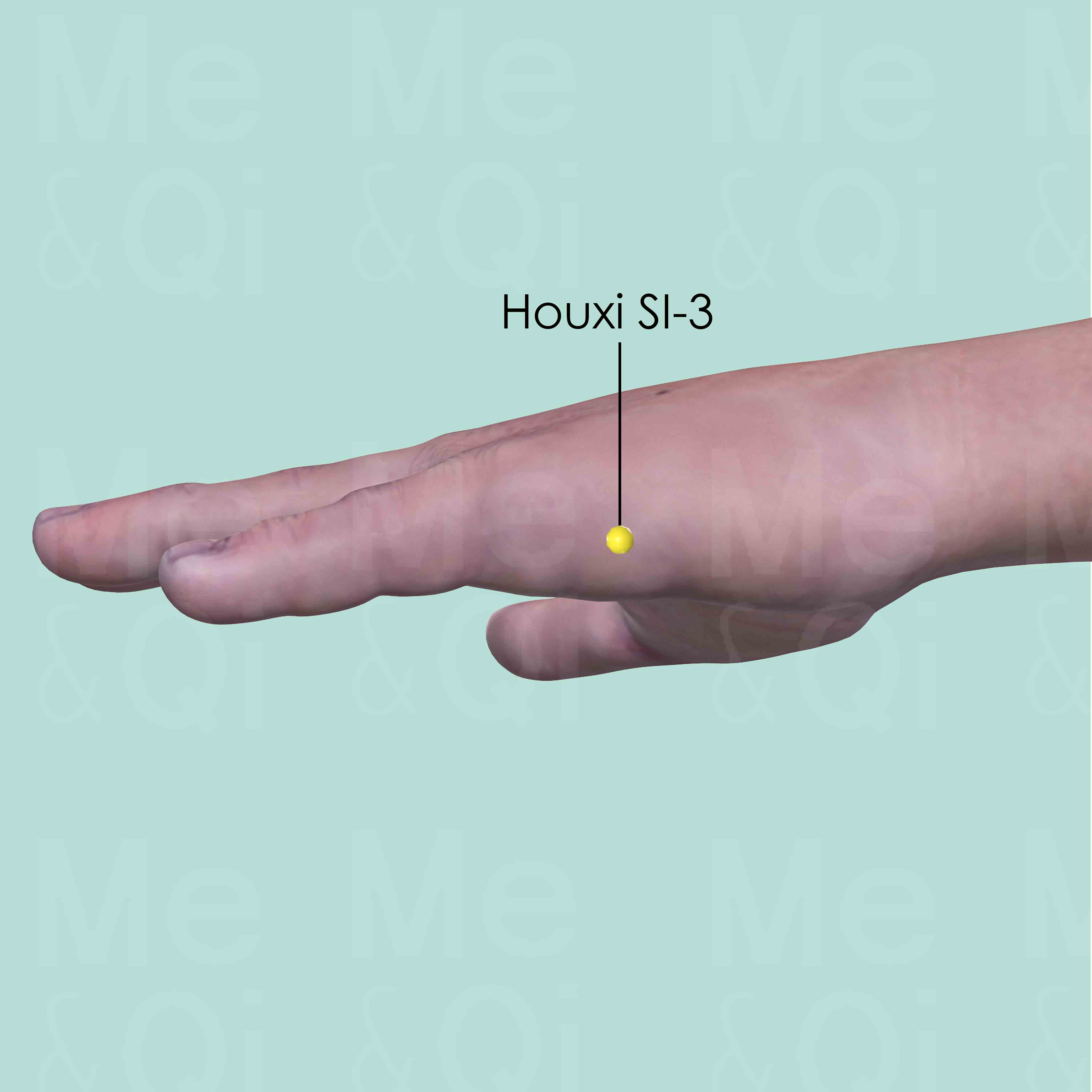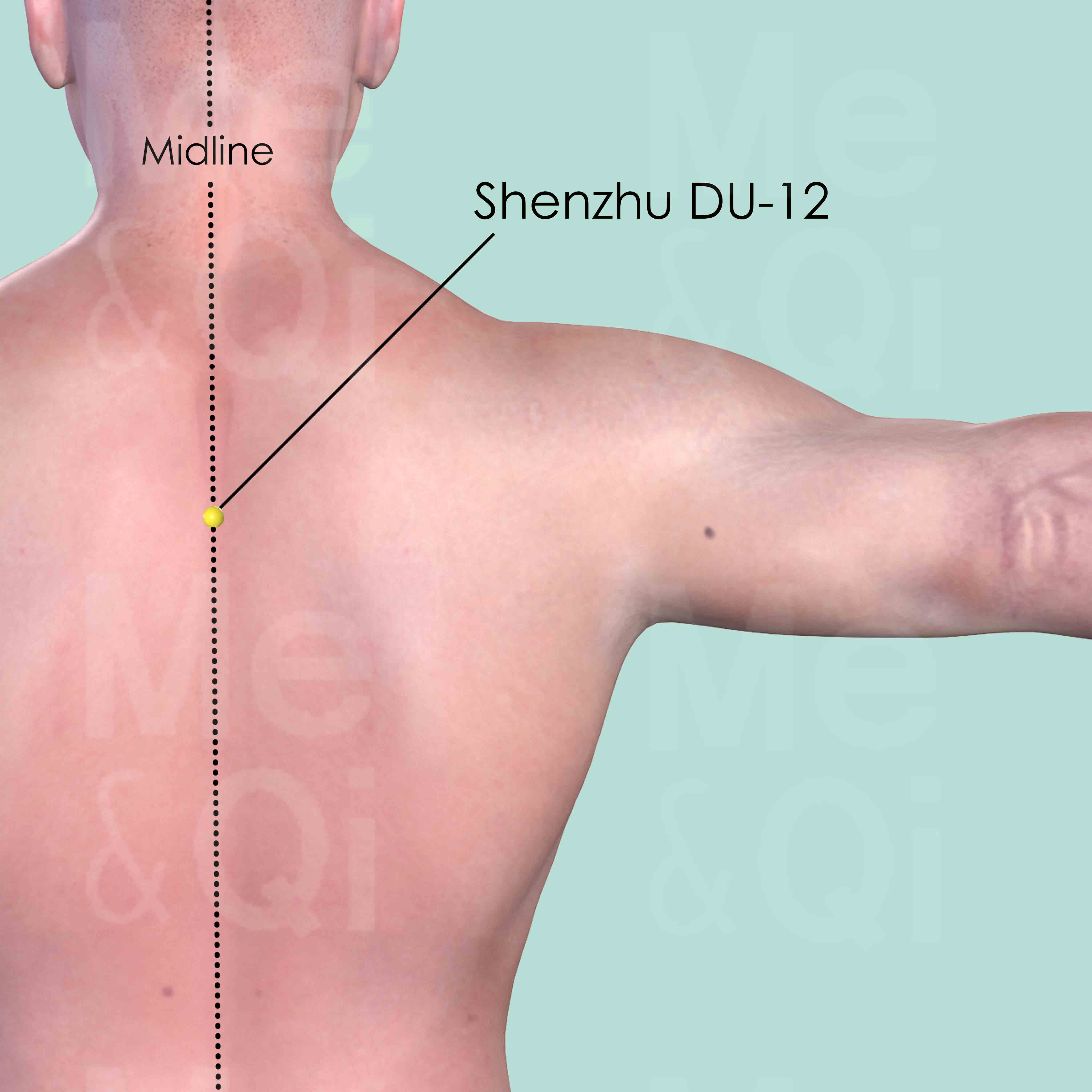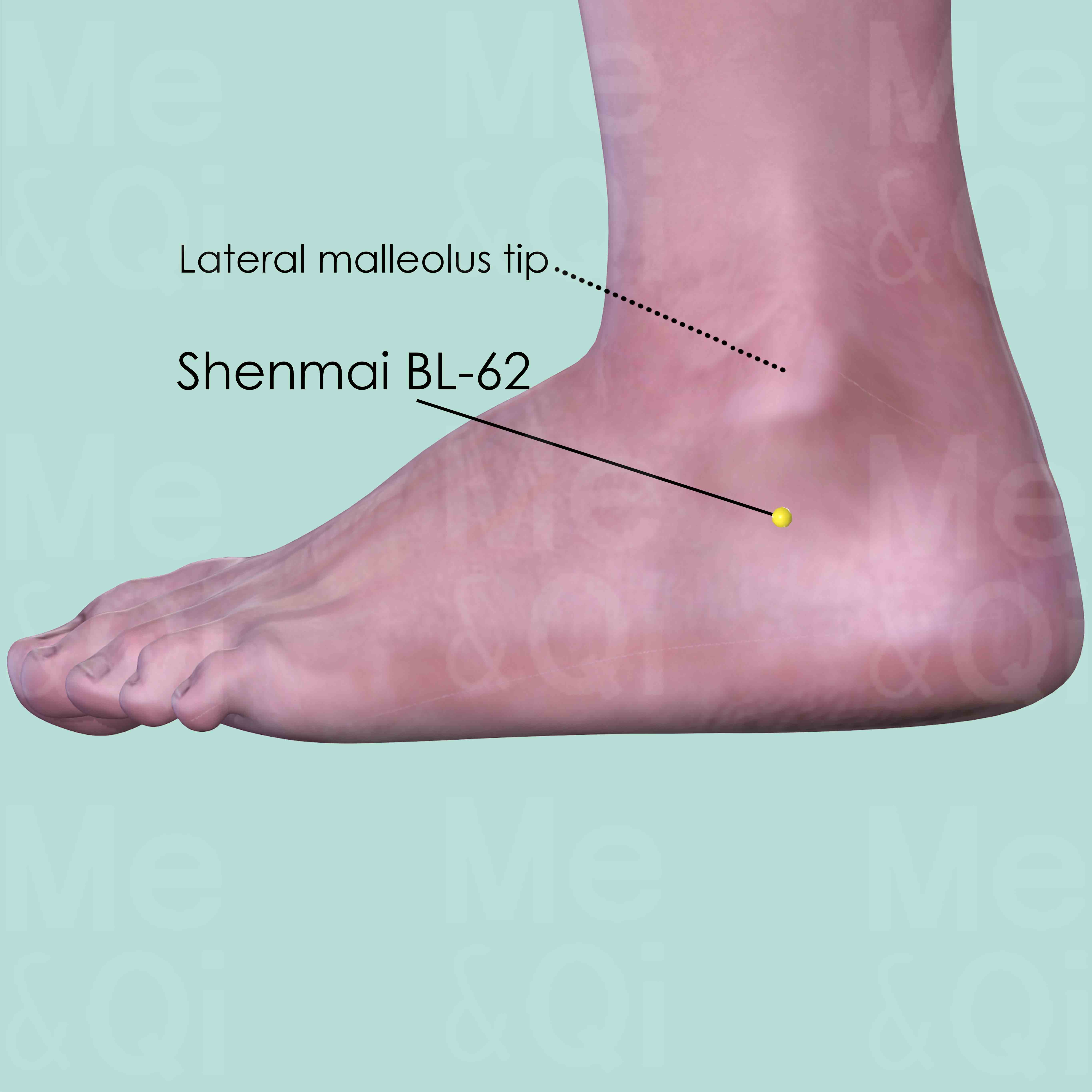Tremorsaccording to TCM
Symptom family: Tremors
Sub-symptom(s): Fine Tremor Essential Tremor
What is Tremors?
Tremors refer to involuntary, rhythmic muscle contractions leading to shaking movements in one or more parts of the body. They are commonly observed in the hands and can extend to the head, voice, arms, or legs.
Tremors are often a symptom of neurological disorders but can occur in otherwise healthy individuals. Known as fine tremor or essential tremor in more specific terms, these movements can vary in severity and frequency, affecting daily activities and quality of life.
How does TCM view Tremors?
Traditional Chinese Medicine (TCM) perceives tremors as an indication of internal imbalance, primarily involving the body's vital energy or Qi, Blood, and the harmony between Yin and Yang.
TCM does not view tremors solely as a neurological issue but as a symptom arising from systemic disharmony. TCM practitioners focus on identifying and correcting the underlying patterns of imbalance, using a holistic approach to restore the body's natural equilibrium.
Root Causes of Tremors in TCM
In TCM, tremors are often attributed to two primary causes. The first involves the disturbance of Internal Wind, often due to Liver Blood Deficiency or Liver Fire. Symptoms accompanying this pattern include irritability, dizziness, headaches, and sometimes a flushed face.
The second common cause is Blood Stagnation, where the circulation of Blood is hindered, leading to symptoms like dark complexion, fixed stabbing pain, and menstrual irregularities. Understanding these patterns is crucial for TCM practitioners to provide effective treatment.
Explore below more details about what might cause Tremors according to TCM.
Wind
In TCM "Wind" is a concept that represents a pattern of disharmony, often characterized by its sudden and unpredictable nature, much like a gusty wind changing direction without warning. This pattern is associated with symptoms that come and go quickly or move around the body, such as itching, tremors, or even certain types of pain. Wind is considered to be a primary cause of illnesses that have these rapidly changing characteristics. In TCM, external Wind often refers to illnesses that start suddenly, like the common cold, believed to be caused by external pathogenic factors like climatic changes. On the other hand, internal Wind can be linked to internal imbalances and can manifest in conditions like dizziness or spasms. ... see more
Wind Patterns That Can Lead to Tremors
Common Symptoms: Dizziness Headaches Limb Numbness Poor Memory Insomnia Dry Throat Blurry Vision Vivid Dreaming
| Pattern Name | Relevant Symptoms | Relevant Formulas |
|---|---|---|
| Interior Wind | Tremor, Convulsions, Hand tremor, Dizziness, Paralysis, Coma, Tic disorder, Mouth deviation, Eye deviation, Tremors, Headaches, Limb numbness... see more | Tian Ma Gou Teng Yin | Ling Jiao Gou Teng Tang | Liu Wei Di Huang Wan | Qi Ju Di Huang Wan | E Jiao Ji Zi Huang Tang | Zhen Gan Xi Feng Tang | Bu Gan Tang | Si Wu Tang |
| Liver Wind agitating Internally due to Liver Fire | Tremor, Tremors, Irritability, Anger, Tinnitus, Deafness, Temporal headache, Dizziness, Flushed face, Eye hyperemia, Thirst, Bitter taste in the mouth, Vivid dreaming, Constipation, Dry stools, Dark urine, Nosebleeds, Vomiting blood, Hemoptysis... see more | Ling Jiao Gou Teng Tang | Zi Xue Dan | Feng Yin Tang |
| Liver Wind agitating Internally due to Liver Yang Rising | Tremor, Tremors, Facial tic, Severe dizziness, Tinnitus, Headaches, Hypertension, Dry throat, Dry eyes, Blurry vision, Limb numbness, Tingling of limbs, Poor memory, Back pain, Oliguria, Night sweats... see more | Liu Wei Di Huang Wan | Qi Ju Di Huang Wan | E Jiao Ji Zi Huang Tang | Zhen Gan Xi Feng Tang | Feng Yin Tang |
| Liver Wind agitating Internally due to Liver Blood Deficiency | Fine tremor, Facial tic, Dizziness, Blurry vision, Limb numbness, Tingling of limbs, Poor memory, Insomnia, Scanty menstruation... see more | E Jiao Ji Zi Huang Tang | Bu Gan Tang | Si Wu Tang |
Blood Stasis
Blood Stasis in TCM is a concept where the blood flow in the body is not as smooth or efficient as it should be. Imagine a river that's supposed to flow freely, but instead, it's getting blocked or moving too slowly in some parts. This can lead to various health issues, like pain that feels sharp or stabbing, dark bruises, and a complexion that looks purplish. TCM believes that good health relies on the smooth and vibrant flow of Qi and blood throughout the body, so when blood gets stuck, it's like a traffic jam in your body, leading to discomfort or health problems.... see more
Blood Stasis Patterns That Can Lead to Tremors
| Pattern Name | Relevant Symptoms | Relevant Formulas |
|---|---|---|
| Blood Stagnation | Tremor, Dark face, Purple lips, Stabbing fixed pain, Abdominal masses, Purple nails, Menstrual cramps, Dark menstrual clots, Dark menstrual blood, Lumps... see more | Tao He Cheng Qi Tang | Da Huang Mu Dan Pi Tang | Gui Zhi Fu Ling Wan | Di Dang Tang | Dan Shen Yin | Da Huang Zhe Chong Wan | San Zhong Kui Jian Tang | Hai Tong Pi Tang | Huang Qi Gui Zhi Wu Wu Tang |
Yang Excess
Yang Excess in TCM refers to a state where there is an overabundance of Yang energy, leading to symptoms of heat and hyperactivity in the body. This pattern of disharmony often arises from factors like stress, excessive physical activity, overconsumption of spicy or heating foods, or an internal imbalance that causes Yang to flare up. Symptoms of Yang Excess include a feeling of heat, red face, irritability, restlessness, thirst, constipation, and a rapid, forceful pulse. Treatment in TCM for Yang Excess aims to cool down and subdue the excessive Yang while nurturing Yin energy to restore balance.... see more
Yang Excess Patterns That Can Lead to Tremors
| Pattern Name | Relevant Symptoms | Relevant Formulas |
|---|---|---|
| Liver Wind agitating Internally due to Liver Yang Rising | Tremor, Tremors, Facial tic, Severe dizziness, Tinnitus, Headaches, Hypertension, Dry throat, Dry eyes, Blurry vision, Limb numbness, Tingling of limbs, Poor memory, Back pain, Oliguria, Night sweats... see more | Liu Wei Di Huang Wan | Qi Ju Di Huang Wan | E Jiao Ji Zi Huang Tang | Zhen Gan Xi Feng Tang | Feng Yin Tang |
Blood Deficiency
Blood Deficiency in TCM is like when your body's tank runs low on the vital energy that blood provides. It's not exactly the same as anemia in modern medicine, which is about having too few red blood cells. Instead, Blood Deficiency in TCM is about your body not having enough of the life-giving qualities that blood brings, like nourishment and moisture. This can make you feel tired, look pale, and even feel dizzy or have blurry vision. It's like a garden not getting enough water to stay lush and vibrant. TCM sees this as an imbalance where the body isn't being nourished as it should be, impacting overall health and well-being.... see more
Blood Deficiency Patterns That Can Lead to Tremors
| Pattern Name | Relevant Symptoms | Relevant Formulas |
|---|---|---|
| Liver Wind agitating Internally due to Liver Blood Deficiency | Fine tremor, Facial tic, Dizziness, Blurry vision, Limb numbness, Tingling of limbs, Poor memory, Insomnia, Scanty menstruation... see more | E Jiao Ji Zi Huang Tang | Bu Gan Tang | Si Wu Tang |
Heat
In TCM "Heat" signifies an excess of Yang energy, leading to an imbalance where heat predominates over the body's cool Yin aspects. This condition is metaphorically akin to an internal over-heating. Symptoms indicative of Heat can include feelings of warmth, fever, sweating, irritability, red face, thirst with a preference for cold drinks, and a rapid pulse. The tongue may appear red with a yellow coating. Unlike the common interpretation of heat in terms of temperature, in TCM, it represents a state of hyperactivity or inflammation in the body.... see more
Heat Patterns That Can Lead to Tremors
| Pattern Name | Relevant Symptoms | Relevant Formulas |
|---|---|---|
| Liver Wind agitating Internally due to Liver Fire | Tremor, Tremors, Irritability, Anger, Tinnitus, Deafness, Temporal headache, Dizziness, Flushed face, Eye hyperemia, Thirst, Bitter taste in the mouth, Vivid dreaming, Constipation, Dry stools, Dark urine, Nosebleeds, Vomiting blood, Hemoptysis... see more | Ling Jiao Gou Teng Tang | Zi Xue Dan | Feng Yin Tang |
Liver
In TCM the Liver is viewed as the organ responsible for the smooth flow of Qi, Blood, and emotions throughout the body. It plays a key role in regulating mood, storing blood, supporting digestion, and ensuring the health of tendons and eyes. When the Liver malfunctions or is imbalanced in TCM, it can lead to a range of issues such as irritability, mood swings, menstrual irregularities, eye problems, and muscular stiffness or pain. A malfunctioning Liver in TCM reflects not only physical disturbances but also emotional and mental disharmony, emphasizing the holistic approach of TCM in addressing health and wellness.... see more
Liver Patterns That Can Lead to Tremors
Common Symptoms: Dizziness Tinnitus Vivid Dreaming Facial Tic Headaches Hypertension Dry Throat Blurry Vision
| Pattern Name | Relevant Symptoms | Relevant Formulas |
|---|---|---|
| Liver Wind agitating Internally due to Liver Fire | Tremor, Tremors, Irritability, Anger, Tinnitus, Deafness, Temporal headache, Dizziness, Flushed face, Eye hyperemia, Thirst, Bitter taste in the mouth, Vivid dreaming, Constipation, Dry stools, Dark urine, Nosebleeds, Vomiting blood, Hemoptysis... see more | Ling Jiao Gou Teng Tang | Zi Xue Dan | Feng Yin Tang |
| Liver Wind agitating Internally due to Liver Yang Rising | Tremor, Tremors, Facial tic, Severe dizziness, Tinnitus, Headaches, Hypertension, Dry throat, Dry eyes, Blurry vision, Limb numbness, Tingling of limbs, Poor memory, Back pain, Oliguria, Night sweats... see more | Liu Wei Di Huang Wan | Qi Ju Di Huang Wan | E Jiao Ji Zi Huang Tang | Zhen Gan Xi Feng Tang | Feng Yin Tang |
| Liver Wind agitating Internally due to Liver Blood Deficiency | Fine tremor, Facial tic, Dizziness, Blurry vision, Limb numbness, Tingling of limbs, Poor memory, Insomnia, Scanty menstruation... see more | E Jiao Ji Zi Huang Tang | Bu Gan Tang | Si Wu Tang |
TCM Herbal Formulas for Tremors
To address tremors, TCM suggests specific formulas based on the identified pattern. For treating Internal Wind due to Liver Blood Deficiency, E Jiao Ji Zi Huang Tang, which includes Donkey-Hide Gelatin, nourishes the Blood and calms the Wind. In cases of Liver Wind stirred by Liver Fire, Ling Jiao Gou Teng Tang, containing Saiga antelope's horns, pacifies Liver Wind and clears Heat.
For Blood Stagnation, Tao He Cheng Qi Tang, with Peach Kernels, is used to invigorate Blood and dispel Stagnation. These formulas are tailored to address the root cause of tremors, aligning with the patient's unique pattern of disharmony.
Explore below some TCM herbal formulas used to address tremors, organized by cause and by formula type.
- By Cause
- By Formula Type
- Wind
- Blood Stasis
- Yang Excess
- Blood Deficiency
- Heat
- View More Causes
- Formulas that invigorate blood and dispel blood stagnation
- Formulas that pacify and extinguish internal wind
- Formulas that tonify blood
- Formulas that nourish yin and tonify
- Formulas that clear internal abscesses and sores
- Formulas that clear external abscesses and sores
- External formulas for external disorders
- Formulas that warm the meridians and disperse cold
- Formulas that clear heat and open sensory orifices
- Formulas that dredge and disperse external wind
- Formulas that warm and transform water and dampness
Top Formula for Wind:
E Jiao Ji Zi Huang Tang
Suitable for Wind patterns that may cause tremors, such as Interior Wind or Liver Wind agitating Internally due to Liver Yang Rising
Learn moreAll Formulas Recommended for Tremors Caused by Wind
| Formula | Patterns Suitable For |
|---|---|
| E Jiao Ji Zi Huang Tang | Interior Wind, Liver Wind agitating Internally due to Liver Yang Rising, Liver Wind agitating Internally due to Liver Blood Deficiency... see more |
| Ling Jiao Gou Teng Tang | Interior Wind, Liver Wind agitating Internally due to Liver Fire |
| Liu Wei Di Huang Wan | Interior Wind, Liver Wind agitating Internally due to Liver Yang Rising |
| Qi Ju Di Huang Wan | Interior Wind, Liver Wind agitating Internally due to Liver Yang Rising |
| Zhen Gan Xi Feng Tang | Interior Wind, Liver Wind agitating Internally due to Liver Yang Rising |
| Bu Gan Tang | Interior Wind, Liver Wind agitating Internally due to Liver Blood Deficiency |
| Si Wu Tang | Interior Wind, Liver Wind agitating Internally due to Liver Blood Deficiency |
| Feng Yin Tang | Liver Wind agitating Internally due to Liver Fire, Liver Wind agitating Internally due to Liver Yang Rising... see more |
| Tian Ma Gou Teng Yin | Interior Wind |
| Zi Xue Dan | Liver Wind agitating Internally due to Liver Fire |
Top Formula for Blood Stasis:
Tao He Cheng Qi Tang
Suitable for Blood Stasis patterns that may cause tremors, such as Blood Stagnation
Learn moreAll Formulas Recommended for Tremors Caused by Blood Stasis
| Formula | Patterns Suitable For |
|---|---|
| Tao He Cheng Qi Tang | Blood Stagnation |
| Da Huang Mu Dan Pi Tang | Blood Stagnation |
| Gui Zhi Fu Ling Wan | Blood Stagnation |
| Di Dang Tang | Blood Stagnation |
| Dan Shen Yin | Blood Stagnation |
| Da Huang Zhe Chong Wan | Blood Stagnation |
| San Zhong Kui Jian Tang | Blood Stagnation |
| Hai Tong Pi Tang | Blood Stagnation |
| Huang Qi Gui Zhi Wu Wu Tang | Blood Stagnation |
Top Formula for Yang Excess:
E Jiao Ji Zi Huang Tang
Suitable for Yang Excess patterns that may cause tremors, such as Liver Wind agitating Internally due to Liver Yang Rising
Learn moreAll Formulas Recommended for Tremors Caused by Yang Excess
| Formula | Patterns Suitable For |
|---|---|
| E Jiao Ji Zi Huang Tang | Liver Wind agitating Internally due to Liver Yang Rising |
| Liu Wei Di Huang Wan | Liver Wind agitating Internally due to Liver Yang Rising |
| Qi Ju Di Huang Wan | Liver Wind agitating Internally due to Liver Yang Rising |
| Zhen Gan Xi Feng Tang | Liver Wind agitating Internally due to Liver Yang Rising |
| Feng Yin Tang | Liver Wind agitating Internally due to Liver Yang Rising |
Top Formula for Blood Deficiency:
E Jiao Ji Zi Huang Tang
Suitable for Blood Deficiency patterns that may cause tremors, such as Liver Wind agitating Internally due to Liver Blood Deficiency
Learn moreAll Formulas Recommended for Tremors Caused by Blood Deficiency
| Formula | Patterns Suitable For |
|---|---|
| E Jiao Ji Zi Huang Tang | Liver Wind agitating Internally due to Liver Blood Deficiency |
| Bu Gan Tang | Liver Wind agitating Internally due to Liver Blood Deficiency |
| Si Wu Tang | Liver Wind agitating Internally due to Liver Blood Deficiency |
Top Formula for Heat:
Ling Jiao Gou Teng Tang
Suitable for Heat patterns that may cause tremors, such as Liver Wind agitating Internally due to Liver Fire
Learn moreAll Formulas Recommended for Tremors Caused by Heat
| Formula | Patterns Suitable For |
|---|---|
| Ling Jiao Gou Teng Tang | Liver Wind agitating Internally due to Liver Fire |
| Feng Yin Tang | Liver Wind agitating Internally due to Liver Fire |
| Zi Xue Dan | Liver Wind agitating Internally due to Liver Fire |
Formulas that pacify and extinguish Internal Wind
These formulas are suitable for some tremors-causing patterns like Interior Wind or Liver Wind agitating Internally due to Liver Yang Rising.
One such formula is E Jiao Ji Zi Huang Tang, with donkey-hide gelatin as a key herb.
Other formulas of this category are listed in the table below.
All "formulas that pacify and extinguish internal wind" recommended for tremors
| Formula | Patterns Suitable For (if applicable) |
|---|---|
| E Jiao Ji Zi Huang Tang | Interior Wind, Liver Wind agitating Internally due to Liver Yang Rising, Liver Wind agitating Internally due to Liver Blood Deficiency... see more |
| Ling Jiao Gou Teng Tang | Interior Wind, Liver Wind agitating Internally due to Liver Fire |
| Zhen Gan Xi Feng Tang | Interior Wind, Liver Wind agitating Internally due to Liver Yang Rising |
| Tian Ma Gou Teng Yin | Interior Wind |
Formulas that tonify Blood
These formulas are suitable for some tremors-causing patterns like Interior Wind or Liver Wind agitating Internally due to Liver Blood Deficiency.
One such formula is Bu Gan Tang, with prepared rehmannia as a key herb.
Other formulas of this category are listed in the table below.
All "formulas that tonify blood" recommended for tremors
| Formula | Patterns Suitable For (if applicable) |
|---|---|
| Bu Gan Tang | Interior Wind, Liver Wind agitating Internally due to Liver Blood Deficiency |
| Si Wu Tang | Interior Wind, Liver Wind agitating Internally due to Liver Blood Deficiency |
| Shao Yao Gan Cao Tang | Not applicable |
Formulas that nourish Yin and tonify
These formulas are suitable for some tremors-causing patterns like Interior Wind or Liver Wind agitating Internally due to Liver Yang Rising.
One such formula is Liu Wei Di Huang Wan, with prepared rehmannia as a key herb.
Other formulas of this category are listed in the table below.
All "formulas that nourish yin and tonify" recommended for tremors
| Formula | Patterns Suitable For (if applicable) |
|---|---|
| Liu Wei Di Huang Wan | Interior Wind, Liver Wind agitating Internally due to Liver Yang Rising |
| Qi Ju Di Huang Wan | Interior Wind, Liver Wind agitating Internally due to Liver Yang Rising |
Formulas that dredge and disperse External Wind
These formulas are suitable for some tremors-causing patterns like Liver Wind agitating Internally due to Liver Fire or Liver Wind agitating Internally due to Liver Yang Rising.
One such formula is Feng Yin Tang, with dragon bones as a key herb.
Formulas that invigorate Blood and dispel Blood Stagnation
These formulas are suitable for some tremors-causing patterns like Blood Stagnation.
One such formula is Tao He Cheng Qi Tang, with peach kernel as a key herb.
Other formulas of this category are listed in the table below.
All "formulas that invigorate blood and dispel blood stagnation" recommended for tremors
| Formula | Patterns Suitable For (if applicable) |
|---|---|
| Tao He Cheng Qi Tang | Blood Stagnation |
| Gui Zhi Fu Ling Wan | Blood Stagnation |
| Di Dang Tang | Blood Stagnation |
| Dan Shen Yin | Blood Stagnation |
| Da Huang Zhe Chong Wan | Blood Stagnation |
Formulas that clear internal abscesses and sores
These formulas are suitable for some tremors-causing patterns like Blood Stagnation.
One such formula is Da Huang Mu Dan Pi Tang, with rhubarb as a key herb.
Formulas that clear external abscesses and sores
These formulas are suitable for some tremors-causing patterns like Blood Stagnation.
One such formula is San Zhong Kui Jian Tang, with phellodendron bark as a key herb.
External formulas for External disorders
These formulas are suitable for some tremors-causing patterns like Blood Stagnation.
One such formula is Hai Tong Pi Tang, with erythrinae bark as a key herb.
Formulas that warm the Meridians and disperse Cold
These formulas are suitable for some tremors-causing patterns like Blood Stagnation.
One such formula is Huang Qi Gui Zhi Wu Wu Tang, with milkvetch root as a key herb.
Formulas that clear Heat and open sensory orifices
These formulas are suitable for some tremors-causing patterns like Liver Wind agitating Internally due to Liver Fire.
One such formula is Zi Xue Dan, with water buffalo horn as a key herb.
Formulas that warm and transform water and Dampness
Tremors can be treated by these formulas if it is due to cold-dampness obstructing the body's functions, requiring warming and damp-transforming actions.
One such formula is Fu Zi Tang, with prepared aconite as a key herb.
Acupoints for Tremors
TCM also incorporates acupuncture in treating tremors. Points like Shenmai BL-62, located below the lateral malleolus, and Danshu BL-19 near the thoracic vertebra, are used for their ability to regulate Qi and clear Wind.
Houxi SI-3 on the hand benefits the sinews and expels Wind, while Shenzhu DU-12 on the back calms the Mind and clears Lung Heat. These acupoints are selected based on their effectiveness in addressing the specific patterns causing tremors, providing a complementary approach to herbal treatments.
Explore below some acupoints used to address tremors, organized by meridian.
- By Meridian
- Bladder Channel
- Small Intestine Channel
- Governing Vessel

Danshu BL-19
1.5 cun lateral to the lower border of the spinous process of the 10th thoracic vertebra (T10).

Houxi SI-3
Proximal to the head of the 5th metacarpal bone on the ulnar side, in the depression at the junction of the red and white skin.

Shenzhu DU-12
On the back midline, in the depression below the spinous process of the 3th thoracic vertebra (T3).

